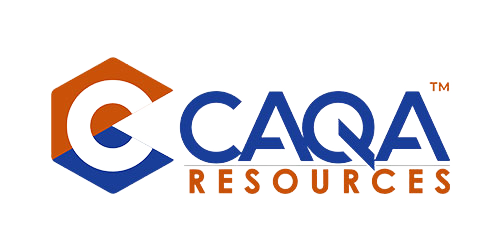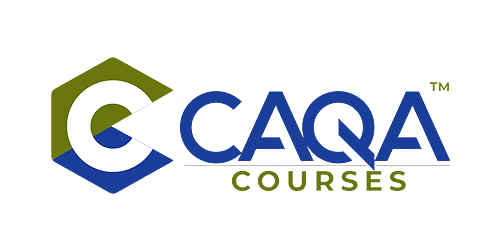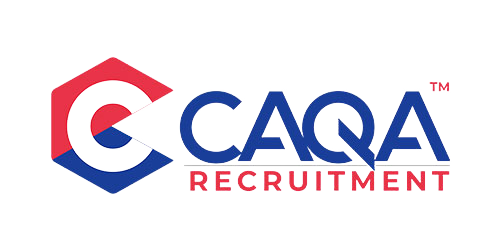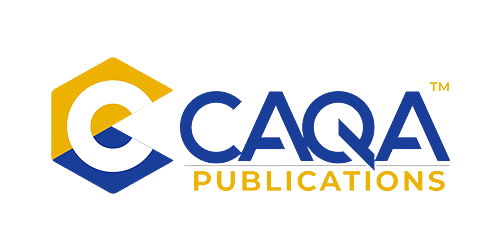Training products are the backbone of the Australian Vocational Education and Training (VET) system. They encapsulate the qualifications, skill sets, units of competency, and accredited courses that Registered Training Organisations (RTOs) deliver to learners. These training products ensure that individuals receive the relevant skills and knowledge required to perform specific jobs or meet industry standards. In this comprehensive article, we will delve into the components of training products, the role they play in the VET sector, and how they should be validated according to the Standards for Registered Training Organisations (RTOs) 2015 (SRTOs).
Understanding Training Products
Training products refer to the structured qualifications, skill sets, units of competency, and accredited courses that enable individuals to gain industry-relevant skills. These products are designed to meet the requirements of various industries, ensuring that learners are prepared for specific job roles or career pathways. Training products are typically part of larger training packages or accredited courses, which are overseen by industry bodies to ensure their relevance and alignment with current workplace needs.
Components of Training Products
Training products can be broken down into four main categories:
- Qualifications: These represent the full set of skills and knowledge required to perform a particular role or occupation. Qualifications are grouped into levels of complexity and responsibility, as outlined in the Australian Qualifications Framework (AQF), ranging from Certificate I to Advanced Diploma.
- Skill Sets: These are smaller combinations of units of competency designed to provide individuals with specific skills relevant to a particular job function. Skill sets are often used for targeted training, such as gaining the skills necessary for compliance or fulfilling immediate workplace needs.
- Units of Competency: These are the building blocks of qualifications and skill sets. Each unit of competency outlines a specific skill or knowledge area that learners need to master. Units of competency are used to assess a learner's ability to perform tasks in accordance with industry standards.
- Accredited Courses: In cases where no suitable training package exists for a particular industry or need, accredited courses are developed. These courses must meet the same high standards as other training products and are designed to fill gaps in industry training.
Training Packages and Accredited Courses
Training products are either included in training packages or offered as accredited courses. A training package is a nationally endorsed framework that defines the competencies required to perform job roles within a particular industry. Accredited courses, on the other hand, are courses designed to meet specific training needs that are not addressed by existing training packages.
Training packages are typically developed by Industry Reference Committees (IRCs) and Skills Service Organisations (SSOs), which consult with stakeholders from various industries to ensure that the products remain relevant and up-to-date. Accredited courses are developed by training providers or industry bodies and must meet the stringent criteria set out by the Australian Skills Quality Authority (ASQA).
Importance of Training Products in the VET Sector
Training products play a crucial role in the VET sector by ensuring that learners gain the skills and knowledge they need to succeed in the workforce. These products are developed in consultation with industry stakeholders, ensuring that they align with the skills required in the real world. This ensures that graduates are job-ready and can contribute to the productivity and competitiveness of Australian businesses.
For RTOs, delivering high-quality training products is essential for maintaining their reputation and ensuring student success. Training products must be designed, delivered, and assessed in a way that meets industry standards and complies with the SRTOs 2015. A key part of this process is the validation of training products.
How Should Training Products be Validated as per SRTOs 2015?
The validation of training products is a critical process for ensuring the quality and integrity of assessments. The Standards for Registered Training Organisations (RTOs) 2015 outline specific requirements for validation, which RTOs must follow to remain compliant and deliver high-quality training. Let’s explore how training products should be validated according to SRTOs 2015.
1. Systematic Validation (Clause 1.9 - 1.11)
Validation must be systematic, meaning it must follow a structured and planned process. According to Clause 1.9 - 1.11 of the SRTOs 2015, RTOs must develop and implement a validation plan that covers all training products on their scope of registration. This plan must ensure that:
- All training products are validated at least once every five years.
- At least 50% of training products are validated within the first three years of each five-year cycle.
A systematic validation plan allows RTOs to schedule validation activities, ensuring that the process is consistent and thorough. The plan should detail when each training product will be validated, who will be involved in the process, and how the findings will be used to improve the assessment system. This approach ensures that validation is not left to chance and that all training products receive the scrutiny they need.
2. Independent Validation (Clause 1.25)
For some qualifications, independent validation is required. This means that individuals who are not directly involved in the delivery or assessment of the training product being validated must participate in the validation process. Independent validation is particularly important for qualifications in the TAE Training Package, which covers the training and education of VET professionals.
Clause 1.25 of the SRTOs 2015 states that independent validation ensures objectivity and impartiality in the validation process. External validators bring a fresh perspective and can identify potential issues that internal staff may overlook. Independent validators should have thenecessary expertise in the relevant industry and assessment practices to provide meaningful feedback.
3. Qualified Validators
Validators play a critical role in the validation process, and they must have the necessary qualifications and experience to perform this role effectively. According to the SRTOs 2015, validators must possess:
- Vocational competencies relevant to the training product being validated.
- Industry skills that are current and aligned with industry standards.
- Assessment expertise, including a deep understanding of assessment principles and practices.
The involvement of qualified validators ensures that the validation process is credible and that the feedback provided is based on a sound understanding of the competencies and industry requirements.
4. Comprehensive Coverage
Validation should cover all aspects of the assessment process, not just the tools used. This includes:
- The assessment tools themselves ensuring that they are valid, reliable, and produce sufficient evidence of competency.
- The assessment methodologies used to collect and evaluate evidence.
- A review of completed student assessments to ensure that assessment judgements are consistent, fair, and aligned with the unit of competency.
Comprehensive validation ensures that every element of the assessment system is scrutinised. By reviewing completed student assessments, RTOs can determine whether assessors are making consistent and accurate decisions based on the evidence provided. This helps ensure that students who are deemed competent have genuinely demonstrated the required skills and knowledge.
5. Documentation and Evidence
Proper documentation is essential for demonstrating compliance with the SRTOs 2015 and for supporting continuous improvement. RTOs must maintain detailed records of the validation process, including:
- Evidence of validation activities, such as meeting minutes, feedback forms, and validation reports.
- Findings from the validation process, including any issues identified and recommendations for improvement.
- Actions taken to address the findings, including changes to assessment tools, processes, or training practices.
Thorough documentation allows RTOs to track the outcomes of validation and ensure that any issues are addressed in a timely manner. It also provides a clear audit trail, which is essential for demonstrating compliance during regulatory audits.
6. Stakeholder Involvement
Engaging a range of stakeholders in the validation process is highly beneficial. Stakeholders may include:
- Internal staff, such as trainers and assessors, who can provide insights into how assessments are being conducted.
- Industry experts who can offer feedback on whether the training products align with current industry practices and needs.
- Other RTOs who can participate in peer validation to share best practices and ensure consistency across the sector.
Involving a diverse group of stakeholders helps ensure that the validation process is thorough and takes into account different perspectives. Industry experts, in particular, can provide valuable feedback on the relevance of the training products to the workplace, ensuring that the skills and knowledge being assessed are aligned with industry requirements.
Why is Validation Important for RTOs?
Validation is not just a compliance requirement—it is a critical quality assurance process that helps RTOs maintain the integrity of their training and assessment practices. By validating their training products, RTOs can ensure that:
- Assessments are valid and reliable: Validation helps ensure that the assessment tools and processes accurately measure the competencies required by the training package or accredited course.
- Assessment judgements are consistent: By reviewing completed assessments, RTOs can ensure that assessors are making consistent and fair decisions across different students and assessment contexts.
- Training products remain relevant: Validation provides an opportunity to review whether the training products are still aligned with industry needs and make any necessary adjustments to keep them current.
In addition to improving the quality of training and assessment, validation helps RTOs demonstrate compliance with the SRTOs 2015. During an audit, RTOs must be able to show that they have a robust validation process in place and that they are continuously improving their assessment practices.
Continuous Improvement Through Validation
One of the key principles of validation is its role in continuous improvement. Validation is not a one-time event—it is an ongoing process that helps RTOs identify areas for improvement and make informed decisions about how to enhance their training and assessment practices. By systematically validating their training products, RTOs can:
- Identify gaps or weaknesses in the assessment system.
- Ensure that assessment tools and methods remain up-to-date with industry trends and requirements.
- Implement changes based on feedback from validators, industry experts, and stakeholders.
Continuous improvement through validation ensures that RTOs remain responsive to the changing needs of the workforce and continue to provide high-quality training that meets industry standards.
Training products are the foundation of the VET sector, encompassing the qualifications, skill sets, units of competency, and accredited courses that RTOs deliver. Ensuring the quality and relevance of these products is essential for both compliance and the success of learners in the workforce.
Validation, as outlined in the SRTOs 2015, is a crucial process that helps RTOs maintain the integrity of their training and assessment practices. By following the requirements for systematic validation, involving qualified and independent validators, and ensuring comprehensive coverage of the assessment system, RTOs can ensure that their training products meet industry standards and provide meaningful outcomes for learners.
In addition to meeting compliance requirements, validation is a powerful tool for continuous improvement, helping RTOs stay aligned with industry needs and remain competitive in the VET sector.


































